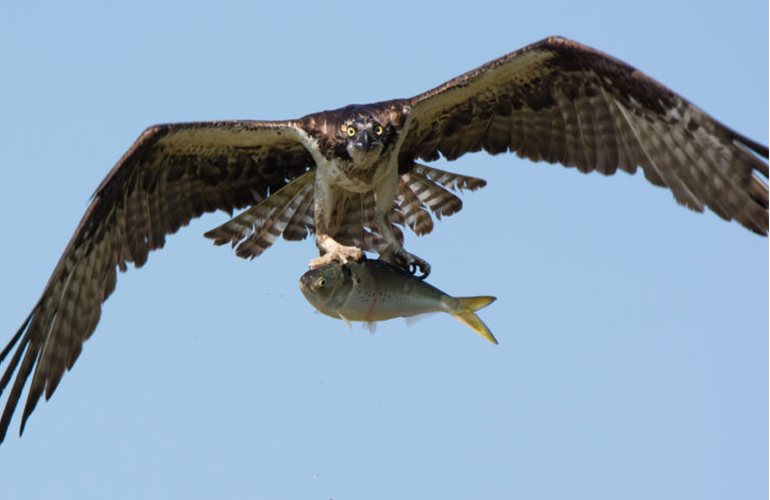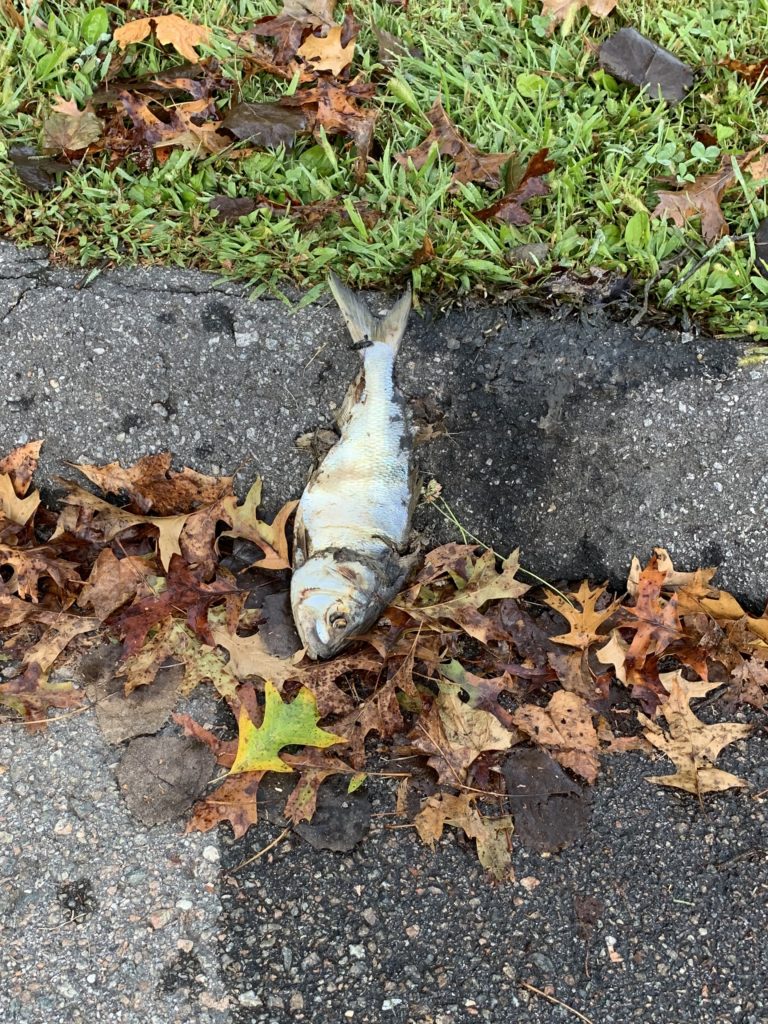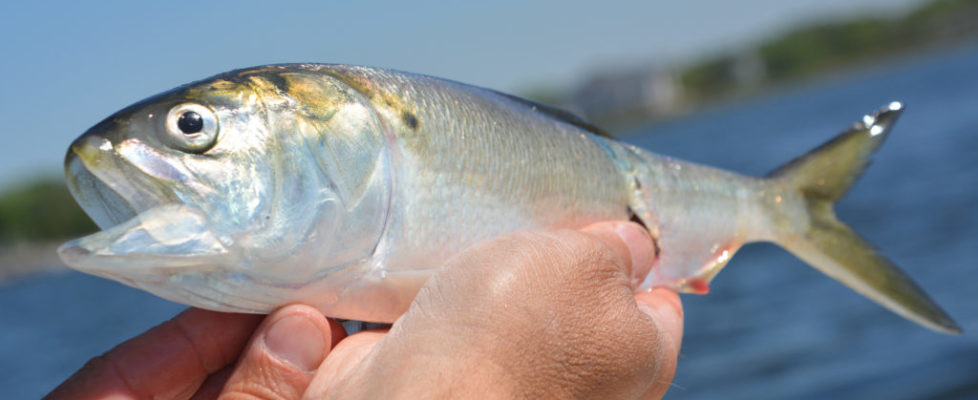The Bird and The Fish
This fall, the walks I’ve taken along the river have almost always featured at least one Osprey winging overhead. In nearly every case, the raptor is carrying evidence of a successful hunting plunge: a medium-sized silvery fish, sometimes still wriggling, always pointing forward.

Nearly every time at this season, the Osprey’s next meal belongs to one species: Atlantic menhaden (Brevoortia tyrannus), a member of the herring family. (It’s more commonly called “bunker” in the Northeast.) Menhaden once lived in such abundance in Atlantic waters and were such a central part of commercial fisheries that they were dubbed “the most important fish in the ocean.”
How could this be, given that very few people actually eat menhaden? Historically, it has been important as a crop fertilizer (legend has it that this was the fish that Squanto told the Pilgrims to bury with their seeds), animal feed, and (more recently) for its oil, which is put into cosmetics and Omega-3 supplements.
Like that of so many other species, menhaden populations crashed in the mid-twentieth century, a victim of massive overfishing exacerbated by pollution. But now, thanks to more stringent catch limits and decades spent cleaning up coastal waters, the fish is again a noticeable presence across the Northeast…including the Hudson River.

(Of course, threats to the rebounding population still exist, including a still-rapacious commercial menhaden fishery utilizing immensely destructive purse-seining methods. In 2019, New York fought back against this threat by forbidding commercial menhaden fishing within the state’s waters.)
Humans aren’t the only ones who’ve noticed that menhaden populations have begun to recover. The number of whales (nearly all humpbacks) spotted in the waters off New York City by the nonprofit Gotham Whale has increased from a mere four in 2010 to a staggering 272 in 2018. One primary reason: the reappearance of the menhaden.
Nor are the whales alone. There’s another species that relies on the menhaden as a food source, especially when the fish mass in the fall prior to migrating south: the Osprey, whose own history over the past 75 years has closely mirrored the fish’s.
As is well known, the Osprey population also crashed in the mid-to-late twentieth century. This was largely due to the uncontrolled use of DDT and other pesticides that thinned the birds’ eggshells and caused nesting failures, but it was exacerbated by declining populations of food fish. As many as 90% of the Northeastern Osprey population vanished during this time.
As much as any species apart from the Bald Eagle, the Osprey served as a vivid symbol of what was being lost back then, and helped lead to the banning of DDT and similar pesticides in the U.S. At the same time, local communities erected nesting platforms in saltmarshes, lakesides, and other likely spots, and the Osprey population started a steady recovery. Today, experts believe that the North American population may exceed that of historical times.
But all the nesting platforms and normal eggshells on earth won’t be enough to maintain Osprey populations without other important elements also falling into place. Primary among these are a ready and healthy food supply—and that’s where the rebounding menhaden populations come in.
To me, this story provides a vivid example of an undeniable reality: All of its elements—the bird, the fish, and the water and air and land they inhabit—are part of one precious, threatened whole.
As, of course, are we.
Joe Wallace



